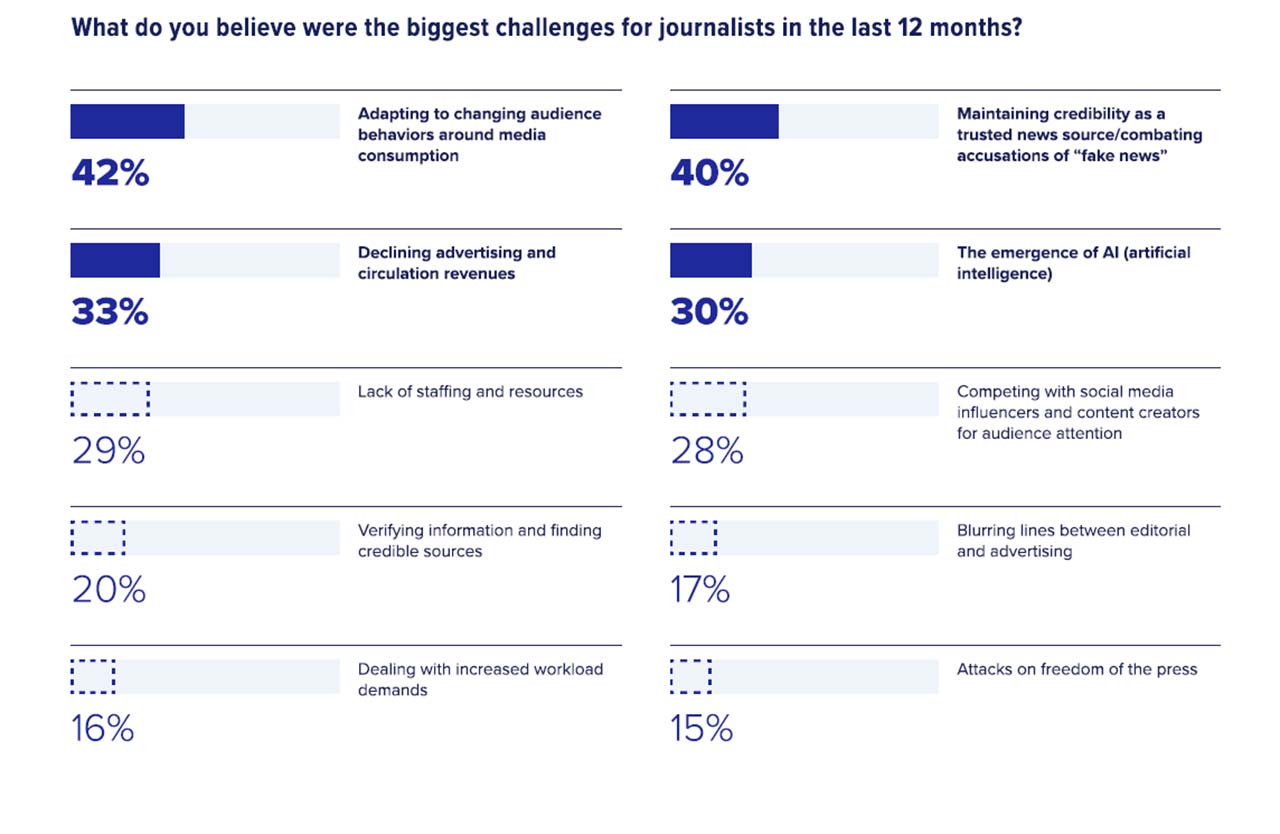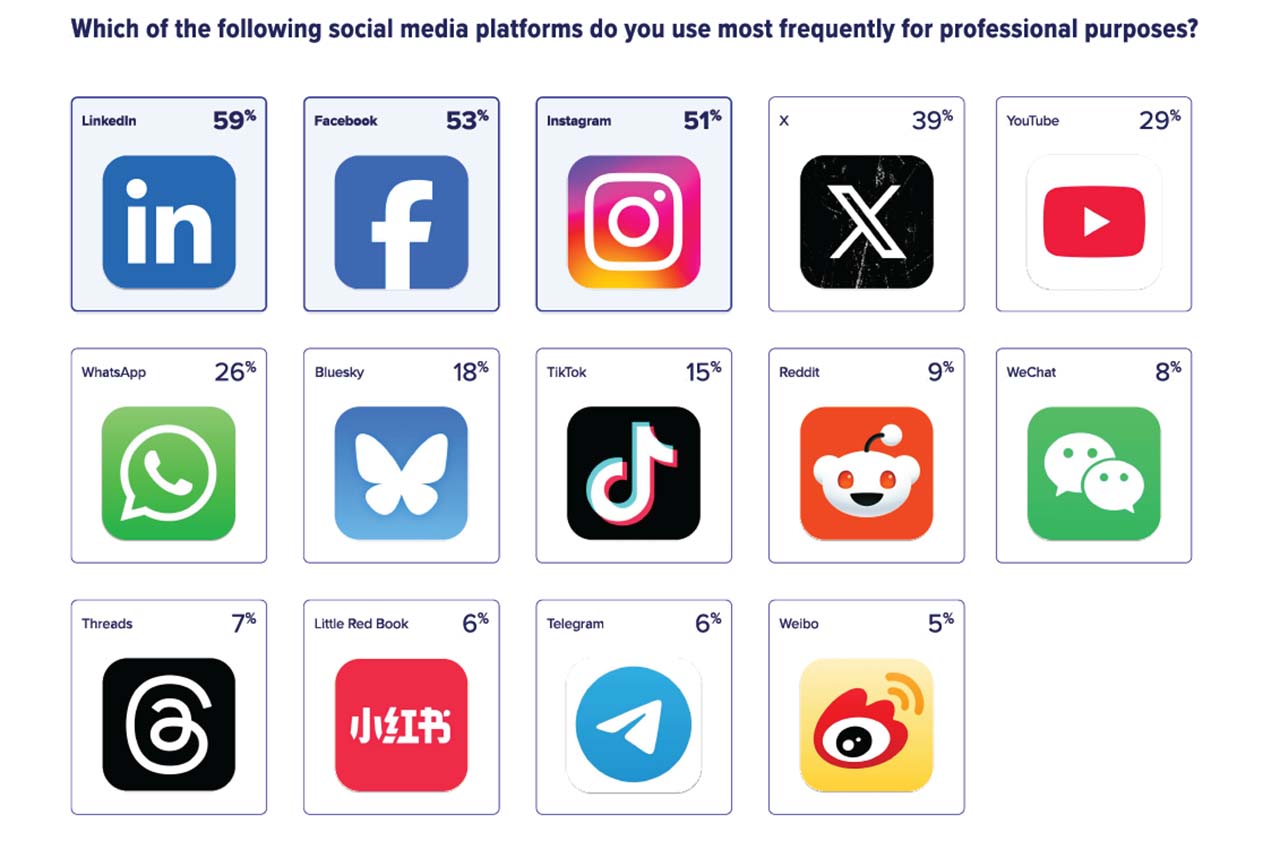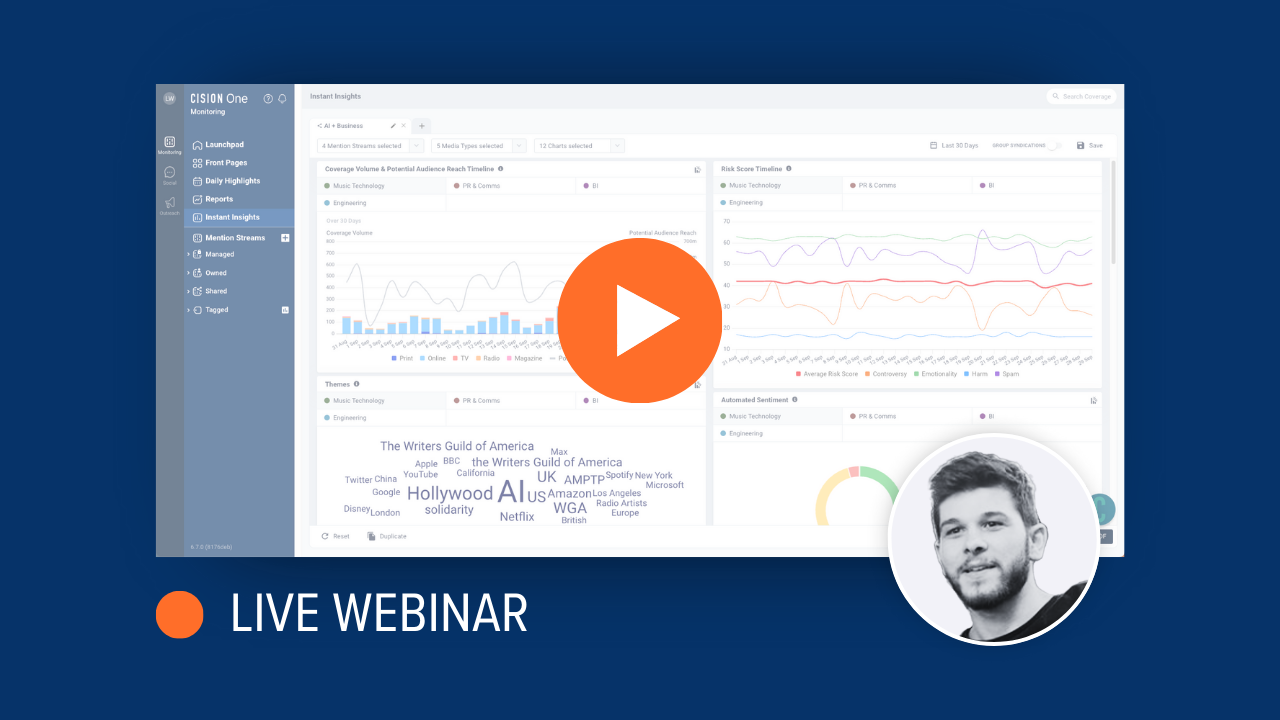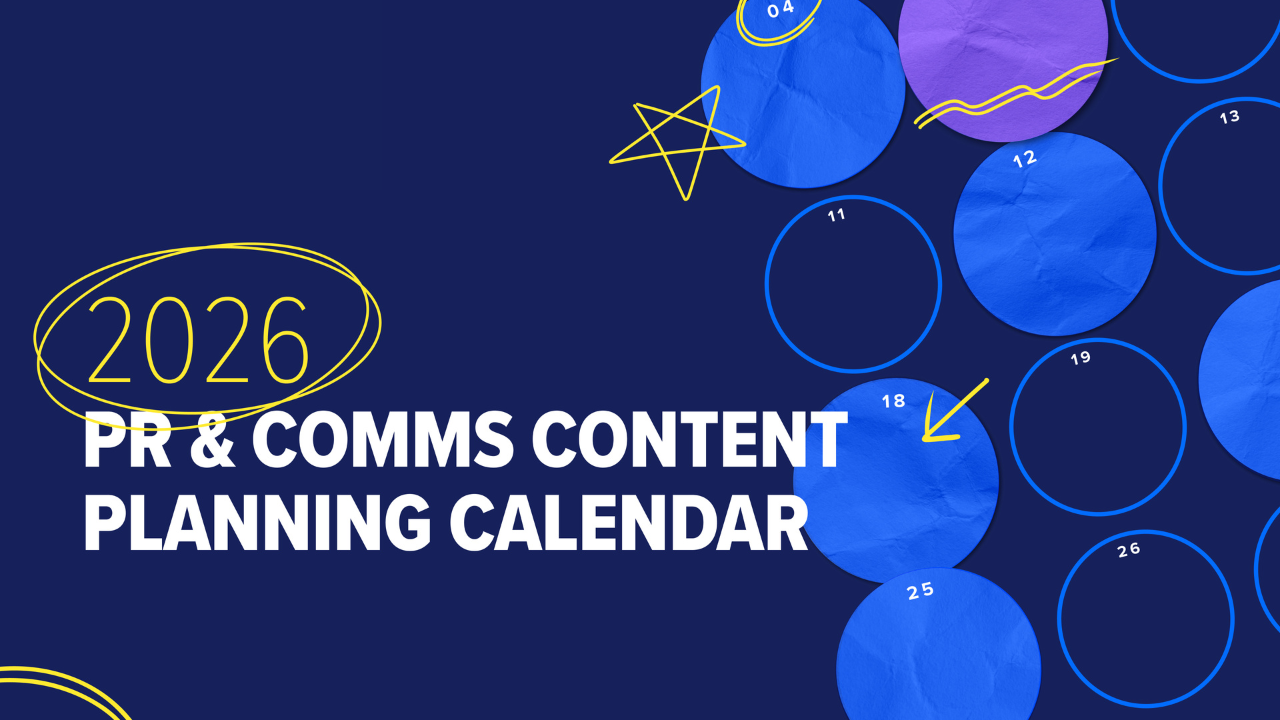2025 State of the Media Unpacks the Challenges of Journalism in the Digital Age and the Impact on PR
The media has evolved at a fast pace in the last two decades. Driven by the shift to online news consumption and the rise of social media platforms, today’s journalism challenges include navigating misinformation, adapting to changing audience expectations, and maintaining editorial integrity.
Cision has been following this journey as far back as 2009, when our State of the Media Report began as a joint journalism survey with George Washington University to track how reporters were using a cutting-edge technology called “social media.”
A lot has changed since then. In 2009, just 56% of journalists said social media was “important” or “somewhat important” for reporting and producing stories. Today, according to the 2025 State of the Media Report, 96% of journalists are using social media for a variety or work-related purposes, from promoting stories to interacting with their audience.
The Impact on Public Relations
For PR and comms professionals, understanding the current media landscape and the challenges of being a journalist can contribute toward building stronger relationships with reporters and getting their brands’ stories shared.
What else does the State of the Media tell us about journalism in 2025? We surveyed more than 3,000 reporters to find out the obstacles imposed by factors such as changing audience behaviors, maintaining trust, and the rapid growth of artificial intelligence.
We encourage you to download the full State of the Media Report, but if you’re short on time, we’ve summarized some of the findings to show what’s on journalists’ minds right now.
1. Journalists Need to Adapt to Audiences’ Changing Behaviors
Journalists’ concerns about audiences’ changing media consumption behaviors are top of mind in 2025. More than 2 in 5 reporters (42%) named this as one of the biggest challenges for journalism in the last 12 months.
This finding indicates that journalists are struggling to keep up with shifts in the way audiences discover news and information. Social media, and creators who are native to these platforms, offer fresh ways for people to consume content – and the speed with which they can disseminate information can easily outpace traditional media outlets.
Many journalists we surveyed also noted their increasing struggles to find audiences due to ever-moving search engine parameters. “Google’s changing algorithm [is] hurting actual content, and seeing studios and sites shut down due to low traffic,” one reporter observed.

PR Takeaway: Many of these journalism challenges will strike a chord with PR. After all, like journalists, comms teams are in the business of creating and distributing content. It’s not enough to understand who your audience is, you need to know where they are. The better you are at pinpointing this, the more chance you have of helping a journalist tell a story that’s relevant to their audience.
2. Credibility, Trust, and “Fake News” Are Big Journalism Challenges
Close behind worries about changing audience behaviors is a concern around trust. Four in 10 said “maintaining credibility as a trusted news source/combating accusations of ‘fake news’” was a big challenge in 2025.
Both journalists and PR professionals have common ground here, with the latter acutely aware of how a brand can be undone by misinformation and reputational damage. Twenty percent of journalists surveyed said verifying information and finding credible sources was one of their biggest challenges.
PR Takeaway: One way PR pros can help here is by ensuring you can back up any claims you make in your pitches or press releases – preferably with verified data or research whenever possible. The more you credible evidence you can provide, the more you can help journalists fight back against information and accusations of “fake news.”
3. Social Media is Getting More Fragmented
Social media’s evolution is an evergreen subject for journalists. They rely on it to promote their content and source stories, but also feel challenged as social platforms (and the content creators and influencers who operate on them) become publishing entities in their own right.
Our journalism survey placed LinkedIn as the top social media channel used by reporters professionally, cited by 59% of respondents ahead of Facebook (53%) and Instagram (51%).
The number of social media platforms is increasing, too. One notable platform to watch is Bluesky (used by 18% of journalists), which launched in early 2023, but is quickly becoming a new favorite among journalists, outranking even TikTok this year.

PR Takeaway: Journalists use social media to look for story ideas and find sources – coincidentally that’s one of the ways PR pros can provide value, according to the 2025 State of the Media Report. Follow journalists you want to connect with to get an understanding of how they work and what matters to them and their audience. Amplify their stories through your own feeds and be ready to offer up relevant resources when the opportunity is right.
4. Freelance Journalists Are Feeling the Financial Pinch
The last year saw substantial news and media layoffs. According to eMarketer, more than 15,000 media jobs were lost in 2024. With these widespread industry job cuts, it’s no surprise that the 2025 State of the Media Report saw 20% of respondents describe their work status as a freelance or independent journalist.
Related to this, one of the big challenges we heard about from freelance reporters we surveyed was around financial and compensation issues. Here’s a selection of what they told us:
- “Rates are dropping, outlets are closing, it's much harder to land pitches and all contribute to dramatically decreased income.”
- “National newspapers pay for general news freelancers is now unsustainable – this never used to be the case. I make a living by doing other jobs as well.”
- “[There’s] no budget for freelance writers.”
PR Takeaway: Understanding how a freelancer works is just as important as knowing a journalist on staff. While freelancers can’t directly commission a story, they will likely contribute to multiple outlets and can open up doors for wider coverage. Freelancers have their own set of journalism challenges, but take the time to get to know them and you can build a mutually beneficial relationship.
5. AI and the Existential Challenges for Journalism
AI has left many in the media grappling with both its potential benefits as well as the negative impact it could have on their jobs. Though 30% of journalists named AI as a major challenge to their profession, more than half (53%) are using it to assist them in their work. For example, 25% said they use it to research certain topics and 23% use it to transcribe interviews and audio.
Interestingly, journalists’ feelings about AI differ significantly by region. For example, North American journalists are most resistant to AI, with nearly 1 in 2 (49%) saying they don’t use it and don’t plan to, compared to only 30% in EMEA and a mere 11% in APAC.

When asked how they feel about PR pros using the technology, the majority say they are open to the idea, with only 27% indicating they are “strongly opposed.” Their biggest concern with PR professionals using AI? Creating content that will contain factual errors, cited by 72% of respondents.
PR Takeway: Creativity and authenticity lie at the heart of journalism, and many editorial staff have spent years developing subject matter knowledge that AI can’t replace. PR should be aware of this when supplying journalists with AI-generated content. Make sure anything you send to them has been checked and verified by human eyes first.
Final Thoughts
These journalism challenges are only one element of this year's State of the Media Report. One thing we’ve learned over the years is that reporters and PR professionals are increasingly operating in a fast-moving environment, both in terms of news cycles and emerging technologies that affect their day-to-day work.
They depend on each other to perform their jobs effectively, and it’s evident that many of these journalistic concerns are the same for PR professionals. Journalism survey data from resources like the State of the Media can help highlight these pain paints and demonstrate opportunities for PR professionals and journalists to work together to produce trusted, credible content that their audiences will find value in.
For more findings on the biggest journalism challenges, download the full 2025 State of the Media Report.
Find out how CisionOne Outreach can help you connect you with the right journalists to share your stories, speak with one of our experts.
Most Recent Posts
Cision Resources
-
E-books and Guides
Comprehensive how-to guides on strategy and tactics
-
Case Studies
What are other brands doing – and how can we learn from them?
About Simon Reynolds
Simon is the Senior Content Marketing Manager at Cision. He worked as a journalist for more than a decade, writing on staff and freelance for Hearst, Dennis, Future and Autovia titles before joining Cision in 2022.
Learn More. Do More. demo new
PR Tips, Case Studies, and Product Updates

[On-Demand Webinar] The Next Generation of Media Intelligence: From Gorkana to CisionOne
Explore CisionOne, a revolutionary media intelligence platform, and the evolution of Gorkana. Learn key features and strategies from Luke Williams, CisionOne Product Marketing Manager. Elevate your media outreach to new heights!


